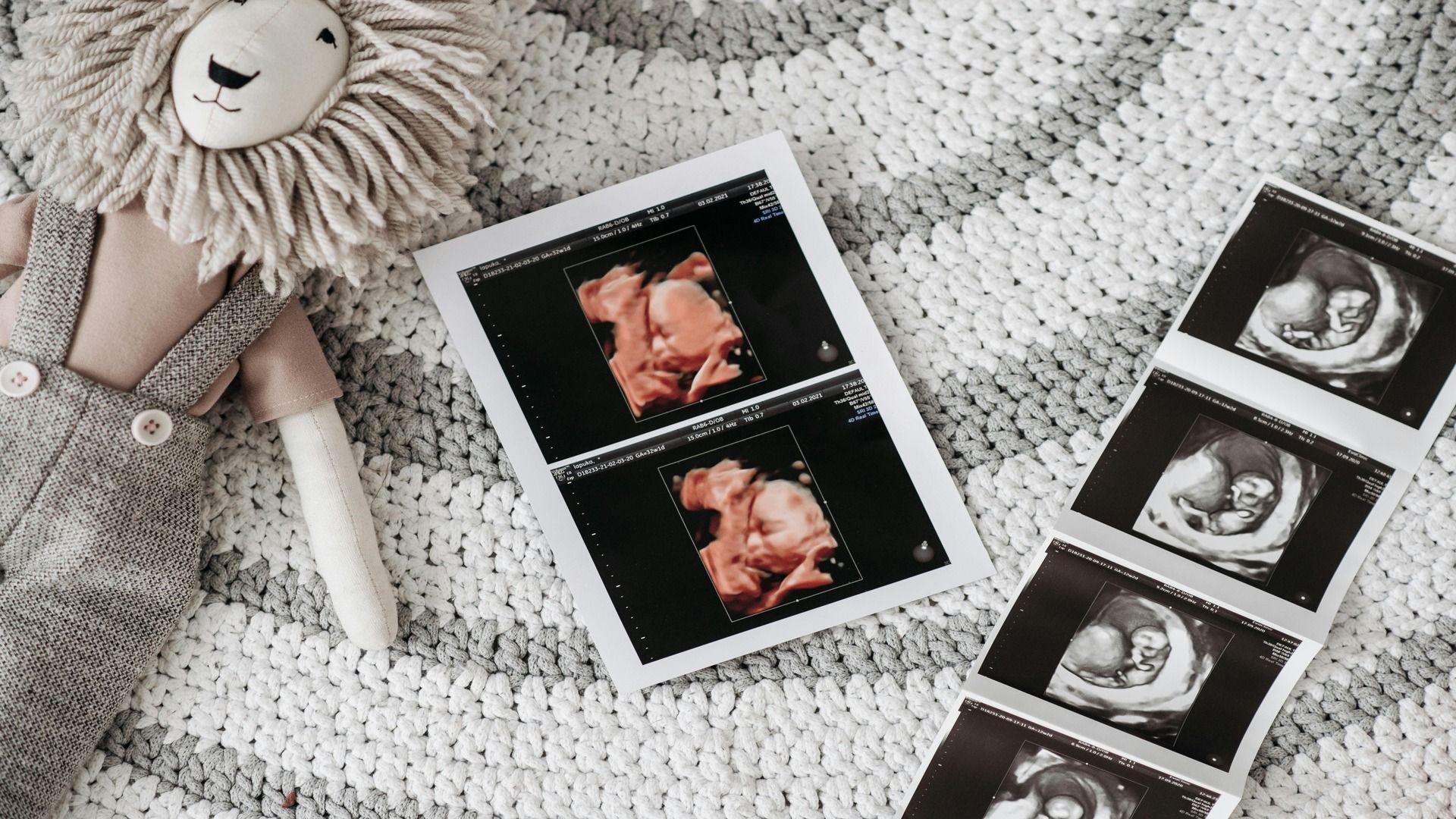Fetal size by weeks of pregnancy height and weight

Sarah Johnson, MD

How do you determine fetus size by week?
The size of a fetus can be estimated using a variety of techniques, which is why different sources will provide different figures.
The estimated fetal weight (EFW) and height of a fetus are determined by experts using formulas that are not always the same. Equations for estimating weight typically employ the following measurements: femur (thigh bone) length (FL), head circumference (HC), abdominal circumference (AC), and biparietal (head) diameter (BPD).
Although height is an easy measurement to take, there are some modifications in how it is taken after the first trimester. The baby's height is measured for the first 13 weeks starting at the top of the head and working down to the bottom. Your baby appears to grow 3 inches from week 13 to week 14 on the chart below because the measurement is taken from the top of the head to the baby's heel after the first 13 weeks!
When measuring your baby with ultrasound technology, the numbers on our chart should match the numbers your healthcare practitioner will be comparing against. (However, after 13 weeks, providers stop measuring height, so don't expect to receive those measurements at your ultrasound appointments.)
better with Soula

Support for every woman:
✅ A Personalized Plan to reduce anxiety and overthinking
✅ 24/7 Emotional Support whenever you need it Cycle-Aligned Mental Health Tracking — monitor your mood and symptoms in sync with your period
✅ Real-Time Insights into your energy levels and emotional state
✅ Bite-Sized Exercises to help you return to a calm, balanced state — anytime, anywhere
Fetal growth chart
Do you ever wonder how large your baby becomes every week that you are pregnant? You can get an idea of your baby's size by looking at the figures in our chart below. Remember that your baby can be either smaller or larger than these figures. That's acceptable; healthy newborns might weigh as little as five pounds or as much as nine pounds. You can explore what happens in those early weeks as your baby begins forming essential structures.
Even at this early age, the dimensions of boys and girls differ. We've averaged the numbers for males and girls on our chart. Recall that height measures taken up until week 13 are estimates from head to toe, but those taken beginning at week 14 are estimates from head to bottom.
|
Gestational age |
Length (US) |
Weight (US) |
Length (cm) |
Mass (g) |
|
8 weeks |
0.62 inches |
0.71 ounces |
1.57 cm |
20 grams |
|
9 weeks |
0.91 inches |
0.95 ounces |
2.30 cm |
27 grams |
|
10 weeks |
1.22 inch |
1.23 ounces |
3.1 cm |
35 grams |
|
11 weeks |
1.61 inch |
1.59 ounces |
4.1 cm |
45 grams |
|
12 weeks |
2.13 inches |
2.05 ounces |
5.4 cm |
58 grams |
|
13 weeks |
2.64 inches |
2.58 ounces |
6.7 cm |
73 grams |
|
14 weeks |
5.79 inches |
3.28 ounces |
14.7cm |
93 grams |
|
15 weeks |
6.57 inches |
4.13 ounces |
16.7 cm |
117 grams |
|
16 weeks |
7.32 inches |
5.15 ounces |
18.6 cm |
146 grams |
|
17 weeks |
8.03 inches |
6.38 ounces |
20.4 cm |
181 grams |
|
18 weeks |
8.74 inches |
7.87 ounces |
22.2 cm |
223 grams |
|
19 weeks |
9.45 inches |
9.63 ounces |
24.0 cm |
273 grams |
|
20 weeks |
10.12 inches |
11.68 ounces |
25.7 cm |
331 grams |
|
21 weeks |
10.79 inches |
14.07 ounces |
27.4 cm |
399 grams |
|
22 weeks |
11.42 inches |
1.05 pounds |
29.0 cm |
478 grams |
|
23 weeks |
12.05 inches |
1.25 pounds |
30.6 cm |
568 grams |
|
24 weeks |
12.68 inches |
1.48 pounds |
32.2 cm |
670 grams |
|
25 weeks |
13.27 inches |
1.73 pounds |
33.7 cm |
785 grams |
|
26 weeks |
13.82 inches |
2.01 pounds |
35.1 cm |
913 grams |
|
27 weeks |
14.41 inches |
2.33 pounds |
36.6 cm |
1055 grams |
|
28 weeks |
14.80 inches |
2.67 pounds |
37.6 cm |
1210 grams |
|
29 weeks |
15.47 inches |
3.04 pounds |
39.3 cm |
1379 grams |
|
30 weeks |
15.95 inches |
3.44 pounds |
40.5 cm |
1559 grams |
|
31 weeks |
16.46 inches |
3.86 pounds |
41.8 cm |
1751 grams |
|
32 weeks |
16.93 inches |
4.30 pounds |
43.0 cm |
1953 grams |
|
33 weeks |
17.36 inches |
4.77 pounds |
44.1 cm |
2162 grams |
|
34 weeks |
17.84 inches |
5.24 pounds |
45.3 cm |
2377 grams |
|
35 weeks |
18.23 inches |
5.72 pounds |
46.3 cm |
2595 grams |
|
36 weeks |
18.62 inches |
6.20 pounds |
47.3 cm |
2813 grams |
|
37 weeks |
19.02 inches |
6.68 pounds |
48.3 cm |
3028 grams |
|
38 weeks |
19.41 inches |
7.13 pounds |
49.3 cm |
3236 grams |
|
39 weeks |
19.72 inches |
7.57 pounds |
50.1 cm |
3435 grams |
|
40 weeks |
20.08 inches |
7.98 pounds |
51.0 cm |
3619 grams |
|
41 weeks |
20.39 inches |
8.35 pounds |
51.8 cm |
3787 grams |
Fetal weight by week: How it changes
Throughout your pregnancy, your unborn child acquires weight gradually, though not necessarily at the same rate. Your baby's growth rate accelerates until 35 weeks if you are expecting a single child, not twins or multiples. After that, it decelerates.
Based on estimates, the following are some highlights:
- Up until 16 weeks, a fetus grows an average of about 19 grams per week, gradually increasing from 7 grams per week at 8 weeks to 15 grams per week at 12 weeks and 29 grams per week at 16 weeks.
- By 20 weeks, a fetus is gaining about 59 grams per week (just over 2 ounces).
- By 30 weeks, a fetus is gaining about 175 grams each week (more than 6 ounces).
- At 35 weeks, a fetus is gaining about 215 grams each week, or about 7.5 ounces. At this point their growth rate peaks.
- After 35 weeks, growth slows to about 188 grams per week, or 6.6 ounces. (Twins slow earlier, at around 28 weeks, and then average about 170 grams each week.)
- In the last few weeks of pregnancy, the growth rate continues to gradually slow to about 168 grams (a little less than 6 ounces) per week by week 40.
Many parents notice more visible second trimester changes as growth speeds up.
During your prenatal checkups, your practitioner will use a fundal height measurement—a tape measure placed over your belly—to determine the approximate size of your unborn child. The measurement in centimeters should approximately correspond to the gestational age of your child starting at approximately 24 weeks. Your fundal height, for instance, should be roughly 26 cm, give or take a centimeter in either direction, if you're 26 weeks pregnant. Your provider may monitor growth even more closely in the final weeks as the due date gets closer.
Your provider will use ultrasonography, which is more exact, to measure your baby's size if they think they are too small. Your doctor can estimate the size of your baby by using ultrasound to evaluate things like head circumference and diameter, abdominal circumference, and femur length. To examine the blood flow to your placenta, they might also do a Doppler ultrasound.
Your infant may be diagnosed with intrauterine growth restriction (IUGR), also known as fetal growth restriction (FGR), if their estimated weight is less than the 10th percentile for their gestational age. IUGR can occur at any point throughout a pregnancy. While some infants with IUGR just grow out to be tiny for their age, there are other situations when the baby's development is stunted.
A newborn diagnosed with IUGR is referred to as "small for gestational age." While the majority of healthy SGA infants grow up perfectly well, some (particularly those who are born preterm) are more likely to experience issues like jaundice, low blood sugar, c-sections, and even long-term developmental and health issues.
Your baby's size by week
Here are some highlights of your baby's growth during pregnancy:
- At 20 weeks, about the midpoint in your pregnancy, your baby is transmitting taste signals to their brain. And you may feel them hiccupping. Your baby's weight at 20 weeks is about 11.68 ounces, and they're about the length of a (10.12-inch) banana.
- At 32 weeks, your baby's lungs are developing fast, and your baby's storing minerals like iron for their first 6 months of life. Your baby's weight at 32 weeks is 4.30 pounds, and their length is 16.93 inches, about the size of a jicama.
- At 33 weeks, things are getting snug in there! Your baby's skin is becoming less wrinkled as they fill in – your baby's weight at 33 weeks is about 4.77 pounds. At 17.36 inches, your baby is now about the size of a pineapple. Alongside physical growth, many families also notice new emotional shifts as the due date approaches.
- At 37 weeks, your baby's brain and lungs are still maturing, and they're still moving a lot, despite the close quarters. Your baby's weight at 37 weeks is about 6.68 pounds, and they're about the length of a bunch of Swiss chard, 19.02 inches.
Once your baby is born, they'll be weighed and measured, and your provider will continue to monitor their growth. While the average newborn weight is a little over 7 pounds, most newborns lose about 5 to 10 percent of their weight in the first days. No worries – they gain it back by the time they're about 2 weeks old, and by 4 months they usually double their birth weight. And if you ever need a calm voice along the way, a supportive AI is always here to help you navigate the journey.














